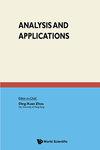开关拓扑下热机械Cucker–Smale模型中单团簇簇的出现
IF 2.4
2区 数学
Q1 MATHEMATICS
引用次数: 3
摘要
我们研究了具有开关网络拓扑的热机械Cucker–Smale(TCS)模型的涌现动力学。TCS模型是一个具有称为“温度”的额外内部动力变量的广义CS模型,其中等温情况与植绒的CS模型完全一致。在以往的研究中,TCS模型的涌现动力学大多局限于一些静态网络拓扑,如完全图、每个节点具有正进出度的连通图和具有生成树的有向图。在本文中,我们考虑了时间块序列中具有生成树的交换网络拓扑,并根据初始数据和系统参数给出了导致渐近单集群集群的两个充分框架。在第一个框架中,时间块的大小由某个正常数一致定界,我们证明了温度和速度直径趋于指数快速为零,并且空间直径是一致定界的。在第二个框架中,我们承认一种情况,即时间块的大小可以通过对数函数温和增长。在后一种框架中,我们的温度和速度直径趋向于零,至少在代数上是缓慢的。本文章由计算机程序翻译,如有差异,请以英文原文为准。
Emergence of mono-cluster flocking in the thermomechanical Cucker–Smale model under switching topologies
We study the emergent dynamics of the thermomechanical Cucker–Smale (TCS) model with switching network topologies. The TCS model is a generalized CS model with extra internal dynamical variable called “temperature” in which isothermal case exactly coincides with the CS model for flocking. In previous studies, emergent dynamics of the TCS model has been mostly restricted to some static network topologies such as complete graph, connected graph with positive in and out degrees at each node, and digraphs with spanning trees. In this paper, we consider switching network topologies with a spanning tree in a sequence of time-blocks, and present two sufficient frameworks leading to the asymptotic mono-cluster flocking in terms of initial data and system parameters. In the first framework in which the sizes of time-blocks are uniformly bounded by some positive constant, we show that temperature and velocity diameters tend to zero exponentially fast, and spatial diameter is uniformly bounded. In the second framework, we admit a situation in which the sizes of time-blocks may grow mildly by a logarithmic function. In latter framework, our temperature and velocity diameters tend to zero at least algebraically slow.
求助全文
通过发布文献求助,成功后即可免费获取论文全文。
去求助
来源期刊
CiteScore
3.90
自引率
4.50%
发文量
29
审稿时长
>12 weeks
期刊介绍:
Analysis and Applications publishes high quality mathematical papers that treat those parts of analysis which have direct or potential applications to the physical and biological sciences and engineering. Some of the topics from analysis include approximation theory, asymptotic analysis, calculus of variations, integral equations, integral transforms, ordinary and partial differential equations, delay differential equations, and perturbation methods. The primary aim of the journal is to encourage the development of new techniques and results in applied analysis.

 求助内容:
求助内容: 应助结果提醒方式:
应助结果提醒方式:


